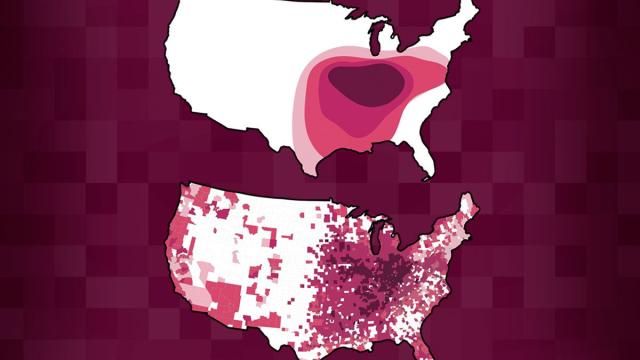An illness-causing fungus known as hisoplasma is in the soil of nearly all U.S. states, a new study suggests. The researchers behind the work say doctors may be relying on outdated risk maps and therefore missing diagnoses of the infections, which can sometimes be deadly.
According to the CDC, histoplasma, or histo, is found in the soil of central and eastern U.S. states, primarily in Ohio and the Mississippi River valleys. But that assumption is based on research from the 1950s and 1960s, says the team behind a new paper published in Clinical Infectious Diseases. When a person breathes in spores of the fungus, they can contract an infection called histoplasmosis.
“Every few weeks I get a call from a doctor in the Boston area – a different doctor every time – about a case they can’t solve,” said study author Andrej Spec, an associate professor of medicine at Washington University in St. Louis, in a press release. “They always start by saying, ‘We don’t have histo here, but it really kind of looks like histo.’ I say, ‘You guys call me all the time about this. You do have histo.’”
Lead author Patrick B. Mazi, a clinical fellow in infectious diseases also at Washington University in St. Louis, and his colleagues analysed more than 45 million Medicare fee-for-service beneficiaries extending from 2007 through 2016. They looked at diagnoses across the country of three fungal diseases: histoplasmosis, coccidioidomycosis, and blastomycosis. Histo, the most common, was causing clinically relevant rates of illness in at least one county in 48 of 50 states, as well as Washington, D.C. The other two infections were each found in more than half of states.
“Fungal infections are much more common than people realise, and they’re spreading,” Spec said in the release. “The scientific community has underinvested in studying and developing treatments for fungal infections. I think that’s beginning to change, but slowly.” Climate change may be driving this spread as warming temperatures make more habitats suitable for the fungi.
While histo can be easily combatted in healthy adults, and many people who are exposed never develop symptoms, those who are immunocompromised as well as infants and people 55 years and older may develop more serious illness, including a cough, fever, chest, pain, body aches, and fatigue, according to the CDC. Symptoms appear within three to 17 days after exposure; most symptoms will go away within a month, but if it spreads from a person’s lungs, the illness can become severe and require months of treatment.
People can be exposed to histo and other fungal pathogens through activities that disrupt soil, like farming, landscaping, and construction. They can also be exposed inside caves and while working in basements and attics. Spec noted: “It’s important for the medical community to realise these fungi are essentially everywhere these days and that we need to take them seriously and include them in considering diagnoses.”
